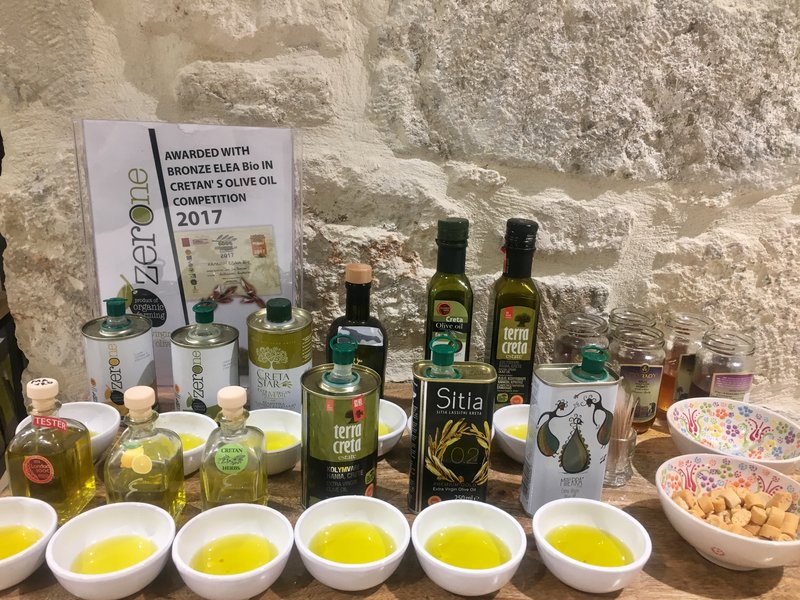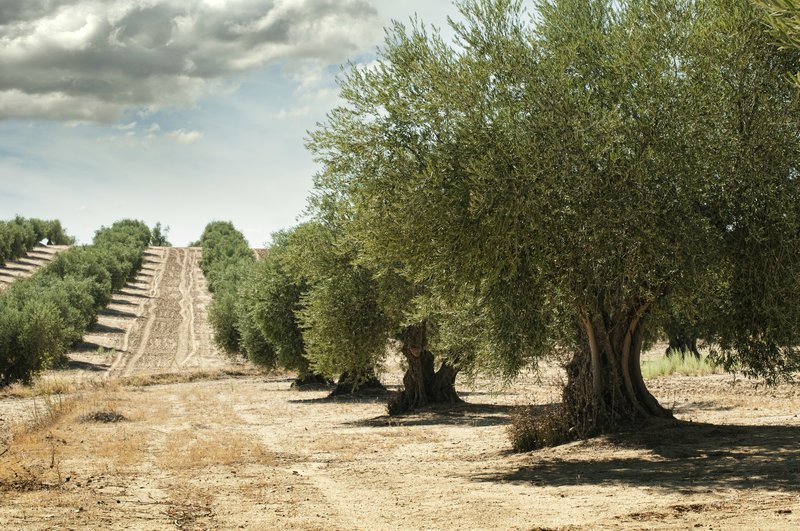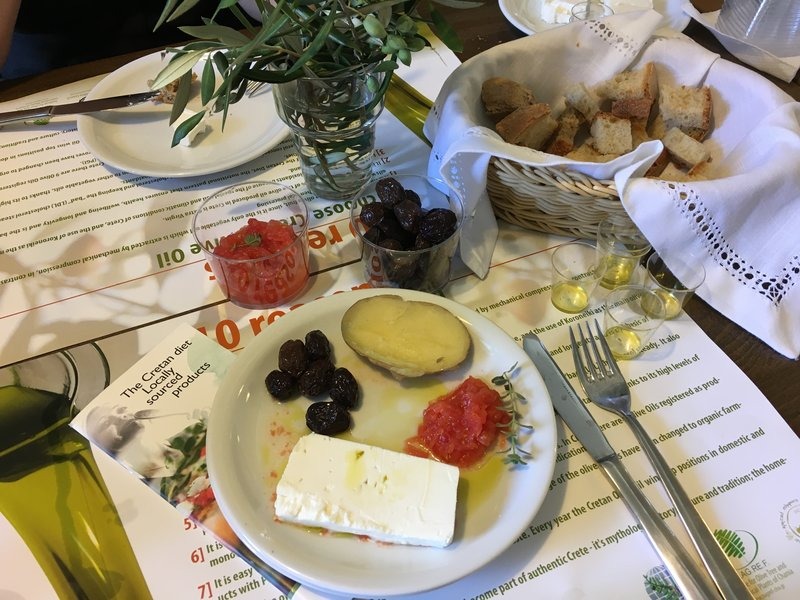
Not far away from the old town of Chania, hidden in the western mountains of Crete, there is an endless extension of lush olive grooves, surrounded by the scenes of the Cretan Sea. It’s a Protected Denomination of Origin Area, called Kolymbari. Here, the weather conditions give origin to a special microclimate, one of the best environments for harvesting the highest quality olive crops.
Chloe Dimitriadis, representing the fifth generation of the Dimitriadis family, runs a company called Biolea, which honours an ancient local tradition. Here, Chloe devotes her life to the production of the “green gold” of Crete that’s one of the staple products in Greece: olive oil.
Amid the fresh air of these mountain fields, you’ll find olive trees as old as 2,000 years. Enter the small premises of Biolea and you’ll note the deep olive aromas that prevade the property. Then, you’ll spot a warm wooden tasting room that welcomes visitors into a world of interesting tastes.

There are ancient olive trees all over Crete | Photo by Crete Urban Adventures
Biolea specialises in estate-produced, stone-milled and cold-pressed organic olive oil. And while olive oil may seem like an ordinary ingredient, there’s nothing ordinary about this family-run company. They achieve excellence by maintaining the benefits of traditional oil extraction methods. And they do so in full respect of the environment. It’s their belief that organic certification is an obligation to protect both the consumers and the environment; sustainable agriculture provides wholesome food while benefitting the whole local community.
Biolea represents one of the very few remaining estates on Crete dedicated to keeping alive this slow method of production. They own — and still use — a very old and impressive traditional stone mill, which fascinates everyone visiting the factory.

Koroneiki olives are resistant to Crete’s rough soil and dry weather | Photo by Crete Urban Adventures
Traditions are simple, and their 3,000 olive trees belong to a specific variety of olive called koroneiki. This small Cretan olive is resistant to the island’s rough soil and frequent drought weather, and results in a fragrant oil with a fine taste that’s ideal for fresh salads and other vegetables.
Chloe takes pride in her company’s small-scale production of about 20,000 litres per year — in comparison, industrialised companies put over 300,000 litres into the market annually.
This is a smart choice that allows Biolea to keep their high standards even higher. They set the difference with an oil that is truly extra virgin, but also young and fresh. Unique to Biolea are cold-press extraction and lack of filtering, both part of the ancient traditions of production — a winning recipe for a genuine result.

To be extra virgin, an olive oil’s acidity should not be over 0.8% | Photo by Crete Urban Adventures
Yet, the originality of Biolea does not only live in this old tradition. There are also some surprises that make their oils really unique. LemoniO is one of them, a kind of aromatic olive oil produced by cold-pressing koroneiki olives with whole fresh lemons, all of them thrown together inside the stone mill. This fabulous oil explodes with an intense aroma of lemon zest as well as a lasting aftertaste of freshly crushed lemons. Needless to say, this is the perfect condiment for salads, fish and poultry.
NerantziO, is another variety of oil produced by Biolea, this time adding whole fresh bitter oranges inside the press, which release an exotic punch of orange blossom and a teasing hint of fruit.
These two varieties, along with their traditional cold-pressed, extra virgin olive oil, are some of the things visitors love to taste in the factory.
While guiding her guests around the premises, Chloe teaches the way to recognise top-quality olive oil, starting with the label. The first word you should look for is ‘virgin.’ Labels such as ‘white olive oil,’ or ‘pure olive oil’ or even ‘good olive oil’ are, in the best of cases, blends. There is nothing pure about them and they are definitely not virgin.
Another thing to be careful of is the use of the word ‘extra.’ This descriptor relates to the level of acidity an oil must have — to be considered extra, that number should not go over 0.8%.
However, having a label that reads ‘extra virgin’ is not enough. According to Chloe, there’s a third factor that people aren’t normally aware of: the harvest date. Olive oil is at its best in the first two years of its harvest.
Beyond the label, another factor that needs to be considered is the cold extraction method that few producers still use. For an olive oil to maintain its best qualities, pressing should take place somewhere below 27°.

In addition to shopping for virgin oils, note the extraction method | Photo by Crete Urban Adventures
Another distinction to be made is the one that differentiates cold press from cold extraction. Modern systems process olives through cold extraction using a chopper. This requires high quantities of water, reducing the final quality of the oil being produced. Plus, a cold press manages to separate the olive from its skin much better than a chopper, producing an olive oil that tastes sweeter, milder and almost buttery.
Did you know that about 5% of the world’s olive oil comes from Crete? Paying a visit to a local, traditional producer will give you an authentic tasting experience that will put all the olive oils you’ve ever tasted into real perspective.
Biolea’s olive oil can be bought in their factory (to visit Biolea, drive to the mountain village of Kolymbari until you reach Astrikas Estate).
Biolea, Astrikas, Kolymbari 73006, Crete, Greece. GPS: 35.463807,23.743427.